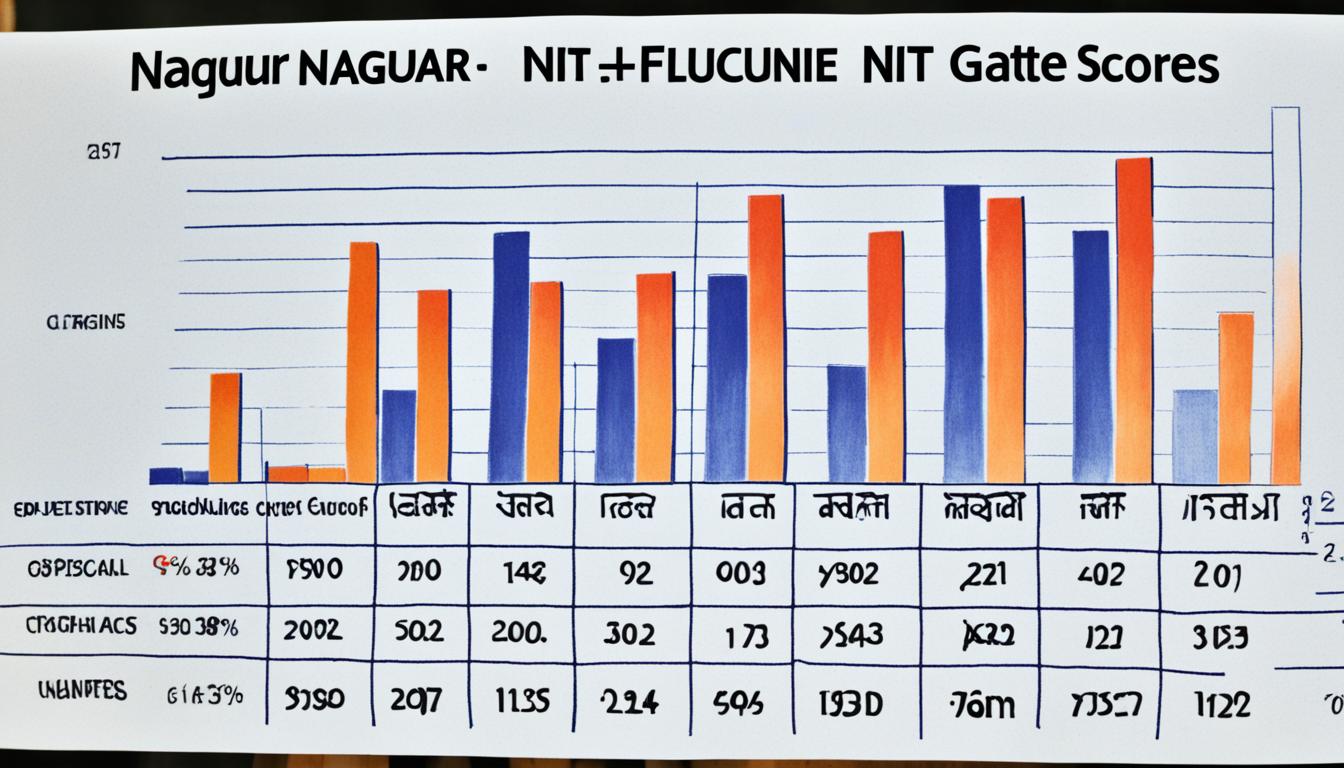Welcome to our quick guide on prime numbers! In this article, we will explore the fascinating world of prime numbers and delve into their mathematical properties, number theory, and various mathematical concepts related to them. Whether you’re a math enthusiast or simply curious about numbers, this guide will provide you with a solid foundation and insights into the significance of prime numbers in mathematics.
Prime numbers are unique and integral to the field of number theory. They hold a special place in mathematics due to their fundamental nature and intriguing properties. By understanding prime numbers, we can unlock a deeper understanding of the way numbers work and reveal the hidden patterns within them.
In this guide, we will define prime numbers and discuss their relevance in number theory and mathematical applications. We will also explore algorithms and methods used to generate prime numbers, such as the well-known Sieve of Eratosthenes. Additionally, we will explore the concept of factorization and its connection to prime factors.
Furthermore, we will dive into the field of number theory, where prime numbers play a central role. We will unravel some of the important concepts and theorems related to prime numbers, contributing to our overall understanding of this fascinating branch of mathematics.
To demonstrate the real-world applications of prime numbers, we will explore their crucial role in cryptography, data encryption, and other mathematical applications. Prime numbers are not just abstract concepts; they have practical implications that impact our daily lives, ensuring the security of communication and protecting sensitive data.
We will also highlight ongoing research and unanswered questions in the field of prime number study. Despite centuries of exploration, there are still many mysteries and unexplored areas within prime number research, leaving room for future discoveries and breakthroughs.
So, join us on this journey through prime numbers, mathematical properties, number theory, and various mathematical concepts. Get ready to unlock the secrets they hold and gain a deeper appreciation for the wonders of mathematics.
Key Takeaways:
- Prime numbers are unique and fundamental in number theory.
- Understanding prime numbers can reveal hidden patterns and relationships within numbers.
- Algorithms like the Sieve of Eratosthenes are used to generate prime numbers.
- Prime factorization helps in understanding the factors of a given number.
- Prime numbers have real-world applications in cryptography and data encryption.
What Are Prime Numbers?
“A prime number is a natural number greater than 1 that cannot be formed by multiplying two smaller natural numbers.”
Prime numbers are fascinating mathematical entities that have intrigued mathematicians for centuries. Let’s delve into the world of prime numbers and explore their unique properties.
The Definition of Prime Numbers
A prime number is a positive integer greater than 1 that has no positive divisors other than 1 and itself. In other words, it is a number that cannot be evenly divided by any other number except for 1 and the number itself.
For example, the first six prime numbers are 2, 3, 5, 7, 11, and 13. These numbers satisfy the criteria of being greater than 1 and having no divisors other than 1 and themselves.
The Significance of Prime Numbers
Prime numbers form the foundation of number theory, a branch of mathematics that focuses on the properties and relationships of numbers. They play a fundamental role in various mathematical applications, including cryptography, data encryption, and computer science algorithms.
One of the unique properties of prime numbers is that they cannot be factored into smaller numbers. This property is essential in encryption algorithms, where the security of encrypted messages relies on the difficulty of factoring large prime numbers.
Furthermore, prime numbers possess intriguing mathematical qualities. They have a random distribution, and there is an infinite number of prime numbers. However, their distribution is not entirely understood, and many questions about prime numbers remain unanswered.
Properties of Prime Numbers
Prime numbers have several interesting properties that make them a subject of extensive study in mathematics:
- They are only divisible by 1 and themselves.
- They cannot be expressed as a product of smaller numbers.
- There is an infinite number of prime numbers.
- Prime numbers become less frequent as numbers get larger.
- Prime numbers have a random distribution without any discernible pattern.
Understanding the properties and behavior of prime numbers is crucial for various mathematical applications and theoretical advancements.
| Prime numbers less than 20 | Even numbers less than 20 that are not prime |
|---|---|
| 2 | 4 |
| 3 | 6 |
| 5 | 8 |
| 7 | 10 |
| 11 | 12 |
| 13 | 14 |
| 17 | 16 |
| 19 | 18 |
Generating Prime Numbers: Algorithms and Methods.
Generating prime numbers is a fundamental task in number theory and various mathematical applications. In this section, we will explore the algorithms and methods used to efficiently find prime numbers. One popular and efficient method is the Sieve of Eratosthenes.
The Sieve of Eratosthenes is an ancient algorithm devised by the Greek mathematician Eratosthenes. It provides an efficient approach for finding all prime numbers up to a given number. This algorithm eliminates composite numbers by iteratively sieving out multiples of each prime number, starting from 2.
“The sieve of Eratosthenes is a brilliant algorithm that revolutionized the way we generate prime numbers.”
To better understand how the Sieve of Eratosthenes works, let’s visualize the algorithm step by step:
- Create a list of consecutive numbers from 2 up to the desired maximum number.
- Start with the first prime number, 2, and mark it as prime.
- Iterate through the remaining numbers and cross out all multiples of the current prime number.
- Move to the next unmarked number, which will be the next prime number, and repeat the process.
- Continue this process until all numbers have been marked or crossed out.
- The remaining unmarked numbers are prime numbers.
The Sieve of Eratosthenes is highly efficient because it eliminates the need to check divisibility by all numbers less than the current number being tested. It reduces the time complexity to approximately O(n log log n), making it one of the most efficient methods for generating prime numbers.
Let’s take a look at an example to see the Sieve of Eratosthenes in action:
| Step | Numbers | Action |
|---|---|---|
| 1 | 2 3 4 5 6 7 8 9 10 11 12 13 14 15 16 17 18 19 20 | Initial list |
| 2 | Mark multiples of 2: cross out even numbers | |
| 3 | Mark multiples of 3: cross out numbers divisible by 3 | |
| 4 | Mark multiples of 5: cross out numbers divisible by 5 | |
| 5 | No more unmarked numbers. Remaining numbers are prime: 2, 3, 5, 7, 11, 13, 17, 19 |
The Sieve of Eratosthenes is a powerful tool for generating prime numbers efficiently. Its simplicity and effectiveness have made it a widely used algorithm in various mathematics applications.
Factorization: Understanding Prime Factors.
Factorization is a fundamental concept in mathematics that involves breaking down a number into its constituent factors. Prime factorization, in particular, is a key technique that helps us understand the unique properties of prime numbers and uncover the building blocks of a given number.
The Importance of Prime Factorization
Prime factorization is the process of expressing a composite number as the product of its prime factors. By identifying the prime factors of a number, we gain valuable insights into its mathematical properties, such as divisibility, and can determine its prime factorization.
For example, let’s consider the number 24. The prime factorization of 24 is 2 × 2 × 2 × 3, where 2 and 3 are its prime factors. This representation allows us to understand that 24 is divisible by 2 and 3 and that it is composed of two 2s and one 3.
Prime Factorization and Divisibility
Prime factorization plays a crucial role in determining the divisibility of a number. By analyzing the prime factors, we can determine all possible divisors of a given number. If two numbers share a common prime factor, then one number is divisible by the other.
Fact: A number is divisible by another number if and only if their prime factorizations have overlapping prime factors.
Let’s consider two numbers, 16 and 32. The prime factorizations of 16 and 32 are as follows:
| Number | Prime Factorization |
|---|---|
| 16 | 2 × 2 × 2 × 2 |
| 32 | 2 × 2 × 2 × 2 × 2 |
From the prime factorizations, we can see that both 16 and 32 have four 2s as their prime factors. Therefore, 16 is divisible by 32.
Prime Factorization and Mathematical Properties
Prime factorization allows us to explore various mathematical properties, such as the greatest common divisor (GCD) and least common multiple (LCM) of multiple numbers.
The GCD of two or more numbers is the largest number that divides all of them without leaving a remainder. By finding the common prime factors and their minimum exponent, we can determine the GCD.
The LCM of two or more numbers is the smallest number that is divisible by all of them. Prime factorization helps us identify the common prime factors and their maximum exponent to calculate the LCM.
Visualizing Prime Factorization
Prime factorization can be visualized using a factor tree, where each branch represents a factorization step. Let’s visualize the prime factorization of the number 36:

In the factor tree above, we start with the number 36 and then continuously divide it by prime numbers until we reach its prime factorization: 2 × 2 × 3 × 3.
In the next section, we will delve deeper into number theory and explore the fascinating world of prime numbers.
Exploring Number Theory.
In this section, we will dive deeper into number theory, a fascinating branch of mathematics that focuses on the study of prime numbers and their properties. Number theory plays a fundamental role in many areas of mathematics and has numerous real-world applications. Understanding the concepts and theorems related to prime numbers is essential for unlocking the mysteries of this intriguing field.
At its core, number theory deals with the properties and relationships of numbers, particularly integers. It explores patterns, structures, and properties of numbers and seeks to uncover fundamental truths about their behavior.
One of the central concepts in number theory is the study of prime numbers. Prime numbers are integers greater than 1 that are divisible only by 1 and themselves. They possess unique properties and play a crucial role in various mathematical applications, such as cryptography, number encryption, and data security.
Let’s take a closer look at some key aspects of number theory and prime numbers:
1. Divisibility
Divisibility is a fundamental concept in number theory. It refers to the property of one number being divisible by another without leaving a remainder. In the context of prime numbers, divisibility plays a crucial role in identifying and understanding the factors of a given number. The prime factorization of a number involves expressing it as a product of its prime factors.
2. Primality Testing
Primality testing is an important area within number theory. It involves determining whether a given number is prime or composite. Various algorithms and methods, such as the Sieve of Eratosthenes, have been developed to efficiently test for primality.
3. Prime Number Theorem
The Prime Number Theorem is a significant result in number theory that provides insights into the distribution of prime numbers among all positive integers. It states that the number of primes less than a given number n is approximately equal to n / ln(n), where ln(n) denotes the natural logarithm of n.
Exploring number theory and prime numbers opens up a world full of intriguing mathematical concepts and profound applications. Let’s continue our journey into number theory, uncovering more fascinating findings and exploring the depths of prime numbers and their significance in mathematics.
Real-World Applications of Prime Numbers.
Prime numbers, with their unique mathematical properties, find practical applications in various fields. Let’s explore some real-world areas where prime numbers play a crucial role:
Cryptography and Data Encryption
Prime numbers are at the heart of modern cryptography systems, ensuring secure communication and data protection. The security of algorithms such as RSA, Diffie-Hellman, and Elliptic Curve Cryptography relies on the difficulty of factoring large prime numbers. By using prime numbers in encryption algorithms, sensitive information remains secure and protected from unauthorized access.
Prime Numbers in Banking and Finance
In the banking and finance industry, prime numbers are used to enhance security and prevent fraud. For example, prime numbers are utilized in credit card transactions, where the card number is validated using prime-based algorithms to ensure authenticity and prevent counterfeit payments.
Internet and Network Security
Prime numbers are also vital in internet and network security protocols. They are used to create secure connections (HTTPS) between web browsers and websites by generating encryption keys. The prime number-based algorithms ensure the confidentiality, integrity, and authenticity of data transmitted over networks.
“Prime numbers are the building blocks of modern cryptography, enabling secure communication and safeguarding sensitive information.”
Prime Numbers in Mathematics Research
Beyond practical applications, prime numbers continue to captivate mathematicians’ interest, leading to significant advancements in number theory. Prime numbers serve as a testing ground for mathematical concepts and conjectures, shaping our understanding of deeper mathematical properties.
Real-World Applications of Prime Numbers
| Field | ttApplication | t
|---|---|
| Cryptography | ttData encryption, secure communication systems | t
| Banking and Finance | ttCredit card validation, fraud prevention | t
| Internet and Network Security | ttSecure connections, encryption protocols | t
| Mathematics Research | ttNumber theory, exploring deeper mathematical properties | t
Through their presence in cryptography, finance, network security, and ongoing mathematical research, prime numbers play a significant role in shaping modern technological advancements and mathematical understanding.
Unanswered Questions in Prime Number Research.
While prime numbers have been studied for centuries, there are still several unanswered questions and ongoing research in this fascinating field of mathematics. These unanswered questions contribute to the continuous exploration of prime numbers and their mathematical properties.
One of the primary areas of research in prime number theory is the distribution of prime numbers. Despite significant progress, mathematicians are still seeking a deeper understanding of the patterns and gaps between prime numbers. The prime number theorem, proven by Jacques Hadamard and Charles Jean de la Vallée-Poussin in 1896, provides valuable insights but leaves room for further investigation.
Another question that remains unanswered is whether there are infinitely many pairs of prime numbers that differ by a fixed even number, known as twin primes. In 2013, Yitang Zhang made a significant breakthrough by proving that there are infinitely many pairs of primes that differ by at most 70 million. However, the question of whether there are infinitely many twin primes still awaits a definitive answer.
Furthermore, prime numbers play a crucial role in encryption algorithms and cryptography. Current research focuses on developing secure encryption systems based on the mathematical properties of prime numbers. The area of prime cryptography continues to evolve as researchers explore new algorithms and methods to ensure the robustness and effectiveness of cryptographic systems.
Research in prime number theory not only enhances our understanding of these unique numbers, but also has practical implications in various fields such as cryptography, data security, and network protocols. The quest for unanswered questions pushes the boundaries of our knowledge and fuels mathematical advancement.
Although there may still be unanswered questions in prime number research, the study of prime numbers remains a thriving field. Mathematicians and researchers continue to explore these mathematical entities, driven by their intrinsic beauty and relevance to number theory. Through ongoing research, these unanswered questions will hopefully lead to new discoveries and deeper insights into the fascinating world of prime numbers.
Conclusion.
In this comprehensive guide on prime numbers, we have explored the significance of these unique mathematical entities. Prime numbers, with their intriguing properties, serve as the building blocks for number theory and various mathematical concepts.
We began by understanding what prime numbers are and examined their distinct characteristics. From there, we delved into the algorithms and methods used to generate prime numbers, with a particular focus on the efficient Sieve of Eratosthenes.
Factorization, specifically prime factorization, played a crucial role in our exploration. We learned how prime factors offer insights into the factors of a given number and their applications in solving mathematical problems.
Furthermore, we explored the wider field of number theory, where prime numbers take center stage. Theorems and concepts related to prime numbers shed light on their deeper mathematical connections and implications.
Real-world applications of prime numbers were also discussed, highlighting their vital role in cryptography, data encryption, and other mathematical applications. Additionally, we touched upon the open questions and ongoing research in prime number theory, illustrating the vastness of this captivating field.
As we conclude our guide, we now have a deeper appreciation for the importance of prime numbers in mathematics. They are not merely numbers; they are the foundation upon which mathematical concepts are built and continue to captivate mathematicians with their mysteries yet to be unraveled.
FAQ
What are prime numbers?
Prime numbers are integers greater than 1 that are divisible only by 1 and themselves. They have unique mathematical properties that make them essential in number theory and various applications.
How are prime numbers generated?
Prime numbers can be generated using algorithms and methods. One popular method is the Sieve of Eratosthenes, which efficiently identifies all prime numbers up to a given limit.
What is factorization and prime factorization?
Factorization is the process of expressing a number as a product of its prime factors. Prime factorization involves breaking down a number into its prime factors, which are prime numbers that divide the number evenly.
What is number theory?
Number theory is a branch of mathematics that focuses on the properties and relationships of numbers, particularly prime numbers. It explores patterns, theorems, and concepts related to numbers and primes.
How are prime numbers used in real-world applications?
Prime numbers find applications in various fields, including cryptography and data encryption. They play a vital role in ensuring the security of sensitive information transmitted online.
What are some unanswered questions in prime number research?
Although prime numbers have been extensively studied, many unanswered questions remain. Mathematicians continue to explore prime number properties and conjectures, seeking further insights into these enigmatic numbers.










